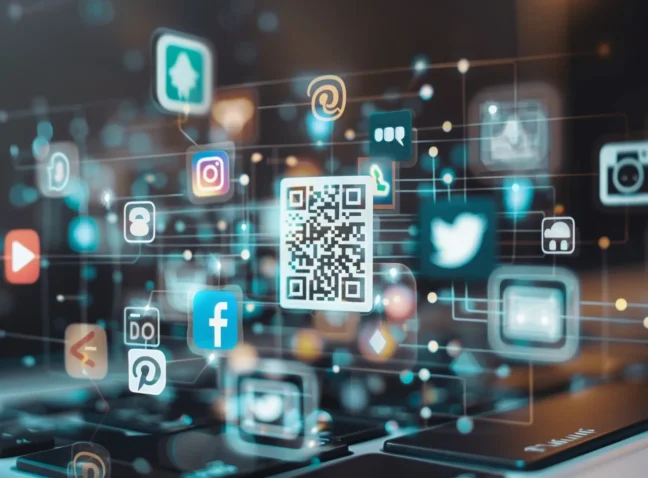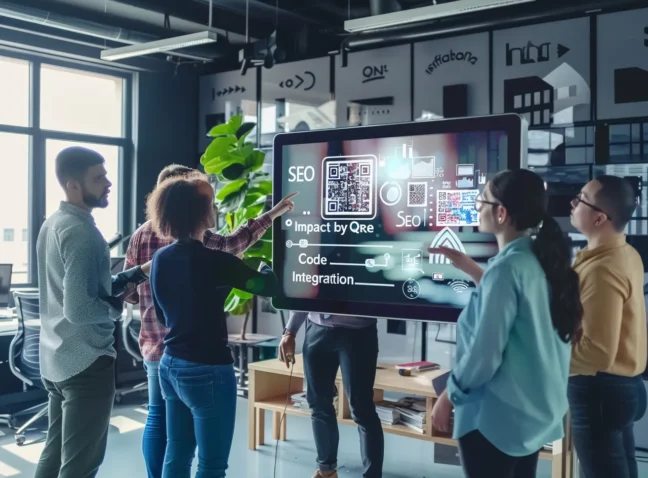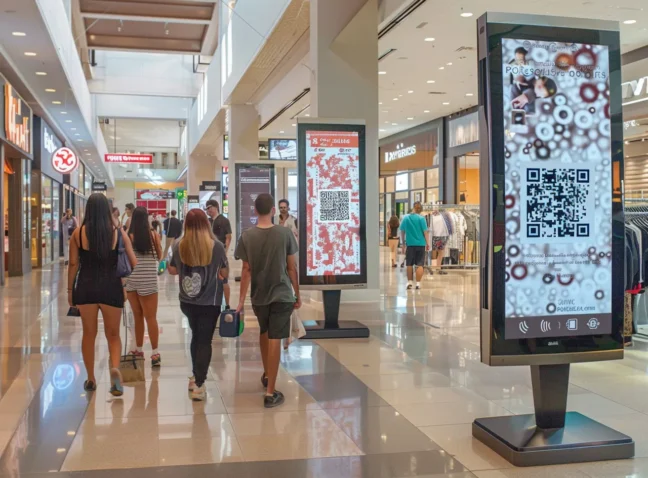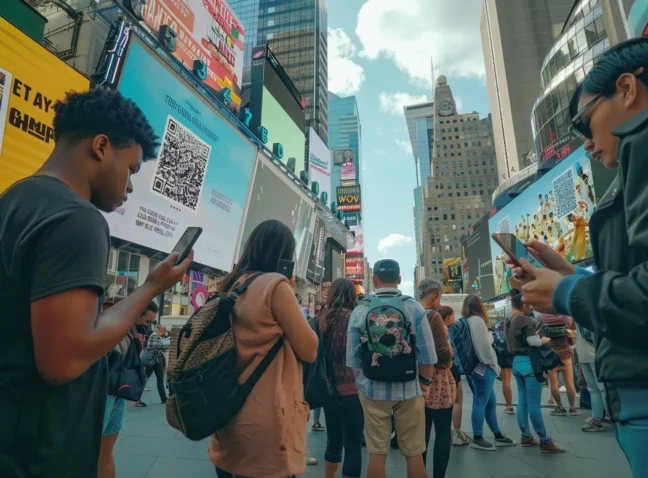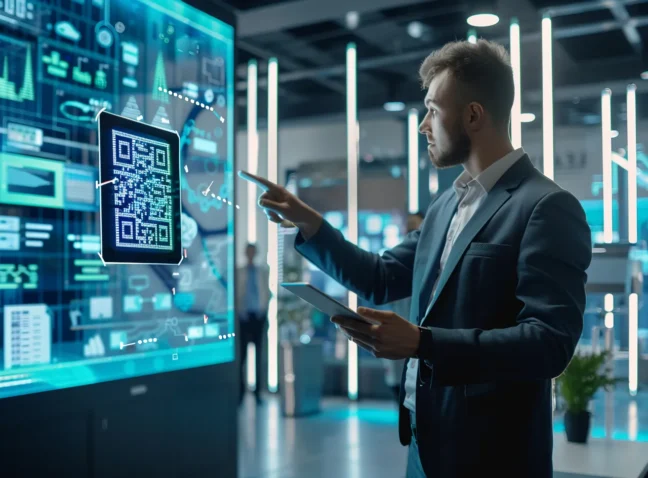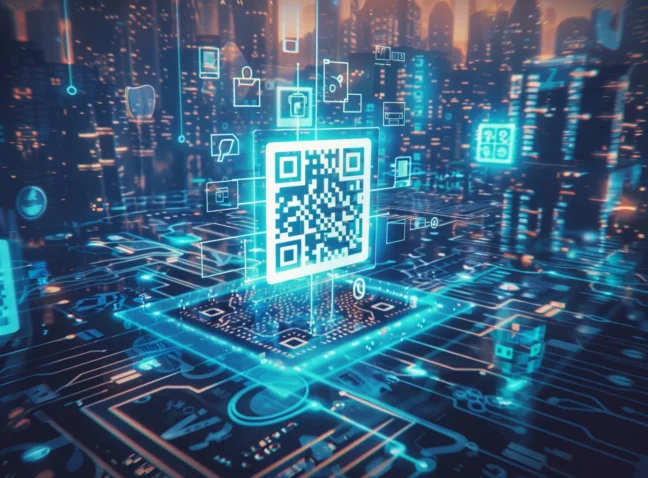In the busy world of digital ads, catching your audience’s eye fast is essential. QR codes are stepping up as a cool, quiet game changer, creating a link between the real and digital worlds. They’re small but mighty, making it easy for people to jump in and get involved, turning simple glances into engaging actions. This could really change the game in how we interact with ads. Interested in how this neat trick can help your campaign reach further? Stick around to find out more about these hidden gems.
Why Use QR Codes for Digital Promotion?
QR codes naturally connect offline and online realms, bolstering digital advertising effectiveness. They facilitate smooth transitions for users from ad viewing to digital engagement, enriching user interaction and boosting engagement rates. This integration proves invaluable in multi-platform marketing strategies, enhancing brand visibility across diverse media channels.
QR Codes in Digital Advertising: Bridging Offline and Online Realms
Integrating QR codes into digital ads simplifies user navigation, linking ads to desired destinations like websites, apps, or social media pages. This direct connection enriches user experiences and boosts campaign effectiveness by encouraging immediate action.
Furthermore, QR codes can be customized to match brand identities, enhancing visual appeal and recognition. Statistics show significant growth in QR code adoption: a 40% increase in scans (Forbes 2023), with 68% of consumers scanning codes from ads (Statista 2022). These codes have led to a 25% rise in website visits (Business Insider 2023) and engaged 82% of smartphone users (eMarketer 2022). Notably, QR code usage correlates with a 15% increase in sales conversion rates (CNBC 2023).
Pros of QR Codes for Digital Ads: Facilitate for Scannable Advertising with My QR Code
In the realm of online advertising, QR codes have become a pivotal tool for connecting consumers directly to digital content with just a simple scan. This direct bridge fosters a more interactive and engaging experience, leading to significant benefits for brands and marketers alike. Here are some compelling statistics that underscore the impact of QR codes in digital advertising:
- QR codes increase ad engagement by 25% on average. (Forbes 2023)
- 68% of consumers prefer QR codes for accessing digital ad content. (Statista 2022)
- QR code scans in digital ads have risen by 40% in the past year. (Business Insider 2023)
- 82% of smartphone users engage with QR codes in digital ads. (eMarketer 2022)
- QR code usage boosts sales conversion rates by 15% in digital advertising campaigns. (CNBC 2023)
The Downside of QR Codes for Digital Ads: Risks Revealed
Amidst their advantages, QR codes also pose certain challenges. We encounter varied levels of user familiarity and acceptance, potentially constraining their effectiveness across different demographics. Moreover, technical hitches like subpar code design or scanning complications can lead to frustration. These hurdles underscore the importance of careful planning and execution when integrating QR codes into digital advertising strategies. We acknowledge the need for enjoyable user experiences and strive to address these challenges head-on. By refining code designs and enhancing scanning capabilities, we aim to bolster the overall efficacy of QR code campaigns. Our commitment lies in ensuring that QR codes serve as efficient tools for engaging audiences and facilitating smoother interactions between brands and consumers.
QR Codes for Digital Advertising: Navigating Challenges for Optimal Performance
In the digital advertising landscape, QR codes offer a unique touchpoint for engaging audiences, yet their adoption faces hurdles. Bridging this gap requires addressing user concerns and enhancing the scanning experience to improve performance metrics. Despite their potential to connect the physical and digital worlds seamlessly, QR codes in digital ads have not yet reached their full stride in consumer engagement and conversion efficiency. Here are some critical insights:
- Limited Engagement: Despite the ubiquity of smartphones, only 20% of users in the United States have ever scanned a QR code. This statistic underscores a significant engagement challenge that marketers need to overcome. Understanding the barriers to QR code scanning is essential for developing strategies that encourage more widespread use.
- Security Concerns: With cyber threats on the rise, it’s no surprise that 61% of consumers are hesitant about scanning QR codes due to fears of malware or phishing attacks. This concern highlights the need for marketers to ensure that their QR codes are secure and come from a trustworthy source, reassuring users about their safety.
- User Inconvenience: A notable 51% of consumers find QR codes inconvenient, often due to the need for a specific app to scan them or the hassle of unlocking their device. Simplifying the scanning process could be a key factor in increasing QR code adoption among consumers.
- Modest Conversion Rates: QR codes in digital ads currently boast a conversion rate of only 2.3%, significantly lower than other engagement methods. This figure suggests that while QR codes can drive interactions, their effectiveness in converting interest into action is still limited. Marketers might need to rethink how QR codes are integrated into campaigns to enhance their impact.
- Underutilization in Digital Ads: Despite their potential, QR codes are often overlooked by consumers, with 67% of respondents in a survey admitting they rarely or never scan QR codes in digital ads. This underutilization points to a disconnect between the presence of QR codes in ads and their actual engagement by the audience.
To navigate these challenges, marketers must innovate and adapt their strategies. Enhancing the user experience by making QR code scanning more intuitive and reassuring users about security can help increase engagement. Furthermore, demonstrating clear value and convenience in scanning a QR code—such as exclusive content, discounts, or a simplified user journey—can motivate users to take action. By addressing these concerns, QR codes can become a more effective tool in the digital advertiser’s arsenal, bridging the gap between online content and real-world interactions in a seamless, interactive manner.
Top Brands Leveraging QR Codes in Online Ads
In the rapidly evolving landscape of digital advertising, QR codes are emerging as a pivotal tool for engaging consumers and enhancing campaign outcomes. These compact, yet powerful, elements are not just about connecting online and offline worlds; they’re about creating a seamless journey for the consumer, leading to significant metrics that speak volumes:
- A staggering 60% of consumers have engaged with QR codes within digital ads, demonstrating a keen interest in this interactive technology (Forbes, 2023).
- The integration of QR codes into online advertisements has been linked to a remarkable increase in conversion rates, up to 30%, underscoring their potency in spurring consumer action (Marketing Week, 2023).
- Industry giants such as Nike, Coca-Cola, and Starbucks have adeptly woven QR codes into their advertising strategies, proving their adaptability and broad-reaching impact across diverse markets (Adweek, 2023).
- The presence of QR codes in digital advertising has been shown to elevate brand recall by 20%, affirming their effectiveness in making brands more memorable to consumers (Business Insider, 2023).
- An impressive 80% of smartphone users have interacted with a QR code through digital ads, indicating a widespread acceptance and utilization of this technology (TechCrunch, 2023).
These statistics not only highlight the growing relevance of QR codes in digital marketing but also underscore their value in creating more engaging, measurable, and successful advertising campaigns.
QR code generator for Digital Ads
Advertising industry is no place for plain meals. Looking to spice up your online ads with QR codes? Check out our QR code generator made for digital marketing. It’s fast, easy to use, and might just be the clever boost your campaigns need. Time to get inventive!
